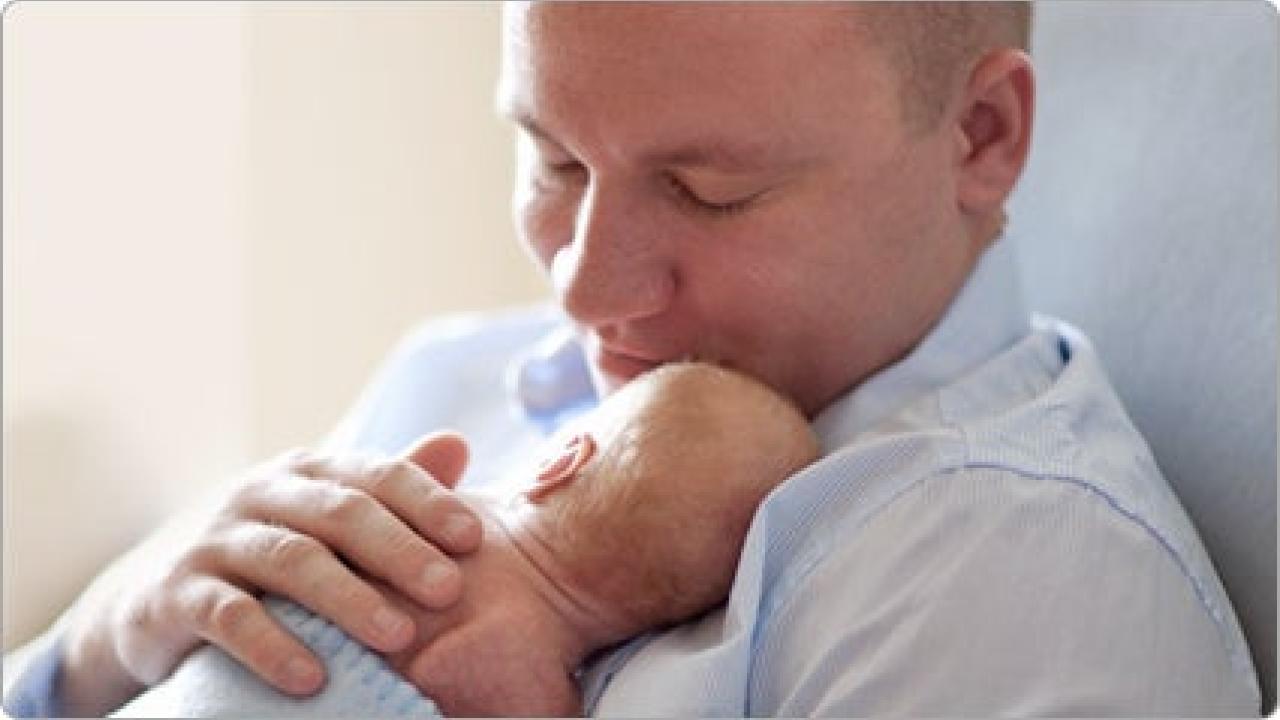Key Points
NAS is a group of conditions caused when a baby withdraws from certain drugs (most often opioids) he’s exposed to in the womb before birth.
Most babies with NAS get treatment in the hospital after birth. Most babies who get treatment get better in a few days or weeks.
During treatment, your baby may be fussy and hard to soothe. Skin-to-skin care, swaddling, being gentle and breastfeeding can help calm your baby.
NAS may lead to long-term health and development problems, including hearing and vision problems and problems with learning and behavior.
If you’re pregnant and taking opioids, tell your provider right away. Don’t stop taking the opioid without talking to your provider first.
What is Neonatal Abstinence Syndrome?
Neonatal Abstinence Syndrome (also called NAS) is a group of conditions caused when a baby withdraws from certain drugs he’s exposed to in the womb before birth. NAS is most often caused when a woman takes drugs called opioids during pregnancy. But it can also be caused by antidepressants (used to treat depression), barbiturates or benzodiazepines (sleeping pills). When you take these drugs during pregnancy, they can pass through the placenta and cause serious problems for your baby. The placenta grows in your uterus (womb) and supplies your baby with food and oxygen through the umbilical cord.
If you’ve been injured or had surgery, your provider may give you a prescription for opioids to help relieve pain. Prescription opioids include:
- Codeine
- Hydrocodone (name brand Vicodin®)
- Morphine (name brands Kadian®, Avinza®)
- Oxycodone (name brands OxyContin®, Percocet®)
- Tramadol
The street drug heroin also is an opioid.
You may hear NAS also called NOWS. NOWS stands for neonatal opioid withdrawal syndrome. NOWS is the same as NAS except it’s caused only by opioids.
If you’re pregnant or trying to get pregnant and taking any of these drugs, tell your health care provider right away.
What are signs of NAS?
Signs of a condition are things someone else can see or know about you, like you have a rash or you’re coughing Signs of NAS can be different for every baby. Most happen within 3 days (72 hours) of birth, but some may happen right after birth or not until a few weeks after birth. They can last from 1 week to 6 months after birth.
If your baby has signs of NAS, call her provider right away. Signs may include:
- Body shakes (tremors), seizures (convulsions), overactive reflexes (twitching) and tight muscle tone
- Fussiness, excessive crying or having a high-pitched cry
- Poor feeding or sucking or slow weight gain
- Breathing problems, including breathing really fast
- Fever, sweating or blotchy skin
- Trouble sleeping and lots of yawning
- Diarrhea or throwing up
- Stuffy nose or sneezing
Signs of NAS depend on:
- What drug you used during pregnancy, how much you used and how long you took it
- How your own body breaks down the drug
- Your baby’s gestational age at birth (number of weeks of pregnancy)
What complications can NAS cause for your baby?
Babies with NAS may have health conditions that need treatment in the newborn intensive care unit (also called NICU) after birth. The NICU is the nursery in a hospital where sick newborns get medical care. In addition to having withdrawal signs, babies with NAS are at increased risk of:
- Low birthweight. This means your baby is born weighing less than 5 pounds, 8 ounces.
- Jaundice. This is when your baby’s skin and eyes look yellow. It’s caused when your baby’s liver isn’t fully developed or working.
- Seizures
- Sudden infant death syndrome (also called SIDS). This is unexplained death of a baby younger than 1 year old. SIDS usually happens when a baby is sleeping.
We don’t know a lot about long-term effects of NAS on a baby. We need more research to see how NAS affects a child in the first few years of life and longer. We think that NAS may cause long-term problems for your baby, like:
- Developmental delays. Developmental delays are when your child doesn’t reach developmental milestones when expected. Developmental milestones are skills and activities that most children can do at a certain age, like sitting, walking, talking, having social skills and having thinking skills.
- Motor problems. These are problems with your baby’s bones, muscles and movement.
- Behavior and learning problems. Babies with NAS are more likely than babies who don’t have NAS to be checked for learning problems and to get special education services in school.
- Speech and language problems
- Sleep problems
- Ear infections
- Vision problems
How is your baby tested for NAS?
Your baby’s provider can use these tests to see if your baby has NAS:
- NAS scoring system. With this system, your baby’s provider uses points to grade how severe your baby’s withdrawal is. Your baby’s provider uses the score to decide what kind of treatment your baby needs.
- Urine and meconium tests to check for drugs. Meconium is your baby’s first bowel movement.
Your baby’s provider also needs to know about what drugs or medicine you’ve used and when you last took them. You may get a urine test.
How is NAS treated?
Your baby’s treatment may include:
- Taking medicines to treat or manage severe withdrawal symptoms. Once withdrawal is under control, your baby gets smaller doses of the medicine over time so her body can adjust to being off the medicine. Medicines used to treat severe withdrawal include morphine, methadone and buprenorphine.
- Getting fluids through a needle into a vein (also called intravenous or IV) to prevent your baby from getting dehydrated. Dehydrated means not having enough water in the body. Babies with NAS can get dehydrated from having diarrhea or throwing up a lot.
- Being fed higher-calorie baby formula. Some babies with NAS need extra calories to help them grow because they have trouble feeding or slow growth.
Most babies with NAS who get treatment get better in 5 to 30 days.
During treatment for NAS, your baby may be fussy and hard to soothe. Doing these things can help calm your baby:
- Room in with your baby. This means you and your baby stay in the same room together at the hospital before you take your baby home.
- Give your baby skin-to-skin care (also called kangaroo care). This is when you put your baby, dressed only in a diaper, on your bare chest.
- Be gentle with your baby. Rock your baby gently. If she’s sleeping, don’t wake her up.
- Swaddle your baby (wrap him snuggly) in a blanket.
- Keep your baby’s room quiet and the lights dim.
- Breastfeed your baby. Feed your baby on demand. This means you feed your baby when he’s hungry.
- Give your baby a pacifier.
Your baby’s provider checks your baby often in the NICU after birth to make sure he’s getting better and having fewer and less severe withdrawal signs. Your baby can go home from the hospital when she:
- Is feeding well
- Is sleeping well
- Is gaining weight
- Has a good NAS score
After your baby is home, take her to all of her follow-up and well-baby checkups, even if she’s doing well. Your provider checks your baby at these visits for problems that may be linked to NAS, like:
- Developmental delays and problems with motor and learning skills and behavior
- Problems with nutrition and growth
- Problems with hearing and vision
- Problems at home, including using harmful substances. This can include misusing prescription drugs and using illegal drugs.
If your baby has developmental delays, talk to her provider about early intervention services. These services can help children from birth through 3 years old learn important skills. Services include therapy to help a child talk, walk, learn self-help skills and interact with others. Getting services as early as possible can help improve your child’s development. The Centers for Disease Control and Prevention has information to help you get early intervention services for your child and how to find services in your state or territory.
What can you do to help prevent NAS in your baby?
Here’s what you can do:
- If you’re pregnant and you use any of the drugs that can cause NAS, tell your provider right away, but don’t stop taking the drug without getting treatment from your provider first. Quitting suddenly (sometimes called cold turkey) can cause severe problems for your baby, including death. If you need help to quit using these drugs, talk to your provider about treatment. Getting treatment can help you stop using drugs and is safer for your baby than getting no treatment at all.
- If you’re pregnant and can’t stop using opioids without problems, ask your provider about medication-assisted treatment (also called MAT). NAS in babies may be easier to treat for babies whose moms get MAT during pregnancy. Medicines used in MAT include methadone and buprenorphine.
- If you’re pregnant and you go to a provider who prescribes medicine to treat a health condition, make sure that provider knows you’re pregnant. You may need to stop taking certain medicines or change to medicine that’s safer for your baby. Ask all your health care providers if the medicine you take—even prescription drugs—can cause NAS in your baby. Even if you use a prescription drug exactly as your provider tells you to, it may cause NAS in your baby.
- If you’re pregnant or thinking about getting pregnant, tell your provider about any drugs or medicine you take. Your provider can make sure that what you’re taking is safe for you and your baby. She also can help you get treatment for using street drugs or abusing prescription drugs if you need it. If you abuse prescription drugs, it means you take more than has been prescribed for you, you take someone else’s prescription drug, or you get the drug from someone without a prescription.
- If you’re not pregnant and you use any drug that can cause NAS: Use birth control until you’re ready to get pregnant. Birth control (also called contraception or family planning) helps keep you from getting pregnant. Examples include intrauterine devices (also called IUDs), implants, the pill and condoms.
More information
See also: Preventing NAS in your baby infographic, Caring for a baby with NAS infographic, Prescription opioids during pregnancy, Prescription medicine during pregnancy
Last reviewed: June, 2019

